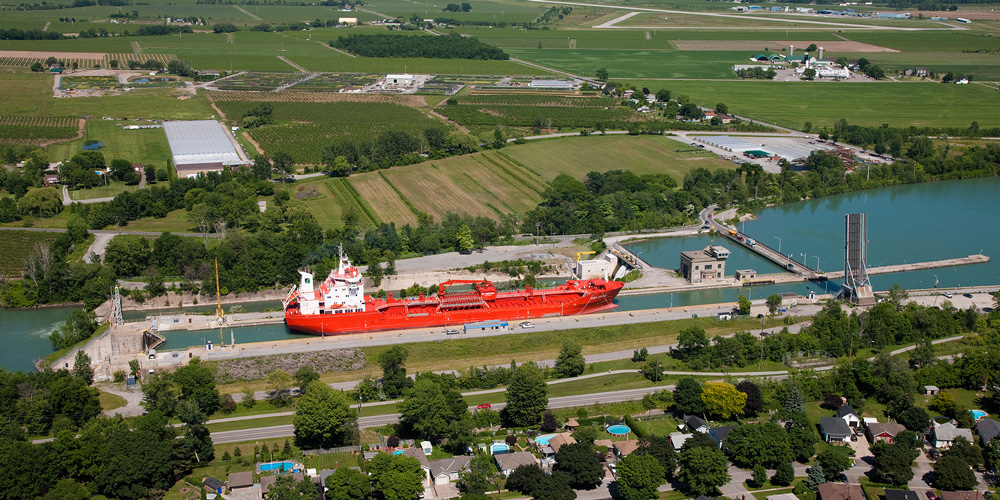Seaway Committed to Sustainable Shipping Practices
July 3, 2009
Cornwall, Ontario (July 3, 2009) – Fifty years after the official opening of the St. Lawrence Seaway by Her Majesty Queen Elizabeth II and President Dwight D. Eisenhower, and in this week when both Canadians and Americans celebrate the birth of their respective nations, the Canadian and U.S. Seaway corporations remain resolute in their commitment to the sustainability of this bi-national transportation system.
In this day and age, the marine mode, and the Seaway in particular, remains an ideal means of moving cargo, providing superior energy efficiency and a minimal greenhouse gas footprint. Moving cargo over water provides relief for our congested highways and rail systems and saves both lives and money. A recent U.S. and Canadian Government study concluded that the use of the Great Lakes and St. Lawrence Seaway (GLSLS) saves consumers $3.6 billion per year in shipping costs. In addition, over 150,000 jobs on both sides of the border are dependent on GLSLS shipping.
Contrary to the recently issued Great Lakes United “A Better Seaway” document and the perception left by some recent press coverage, Seaway operators and users are very active in maximizing the benefits that flow from GLSLS transportation while minimizing any resulting impacts.
This is never truer than in respect to efforts put forward to eliminate the potential for introduction of invasive species in ship’s ballast water. Current Seaway regulations require every ship entering the Great Lakes to undertake saltwater flushing of its ballast tanks, a practice scientifically determined to be “highly effective” in killing freshwater organisms. Moreover, a bi-national inspection program assures that 100 % of the ballast tanks on ocean-going ships entering the GLSLS are inspected or verified to assure compliance with these regulations. The GLSLS has the most stringent ballast water inspection regime in the world and no unmanaged ballast water is entering the GLSLS. Since the progressive implementation of these ‘best practices’ in 2006, there have been no new invasive species reported.
Industry participants are actively engaged in the Green Marine initiative and are pursuing the means to address a host of environmental goals, including air emission standards. Best in class industry practices are being adopted, and certification of member adherence to these standards is underway. For more information on Green Marine, please consult www.green-marine.org.
We invite stakeholders to join us in moving forward in serving the interests of all citizens. For more information concerning the Seaway and insight into its future, please visit www.greatlakes-seaway.com.






